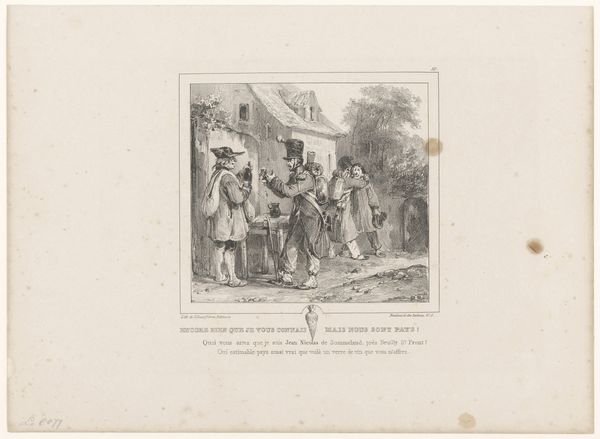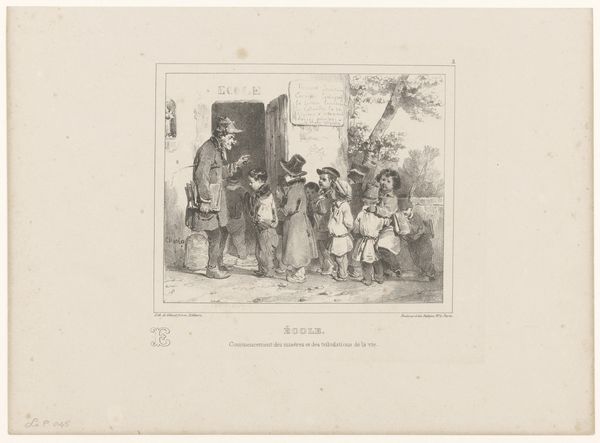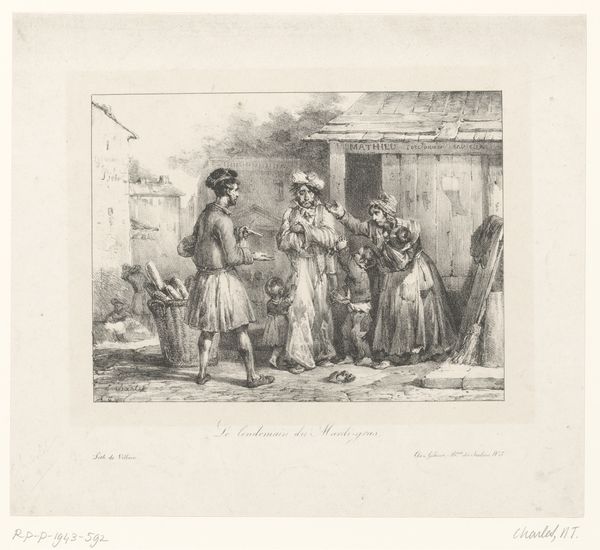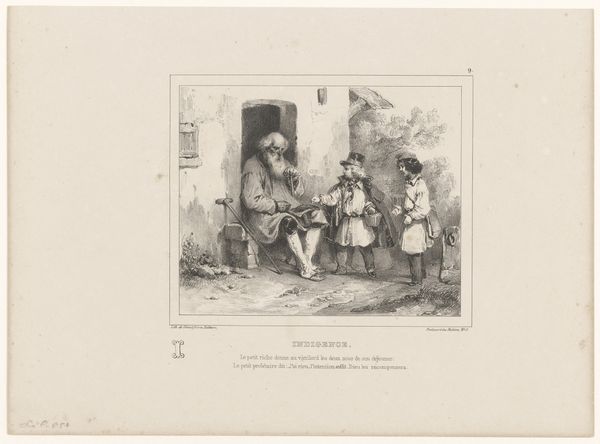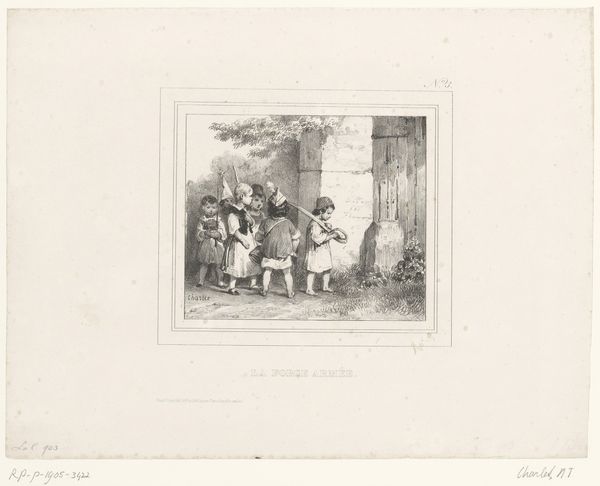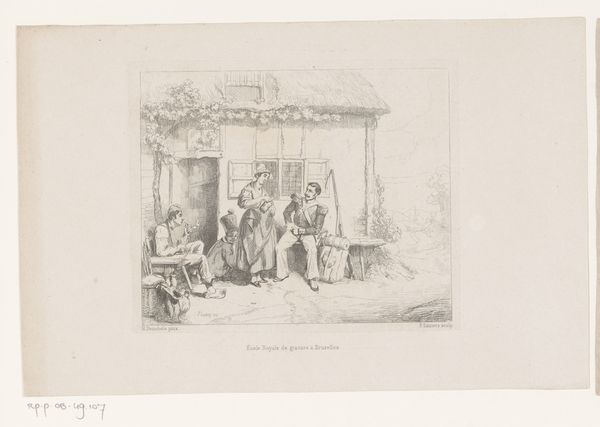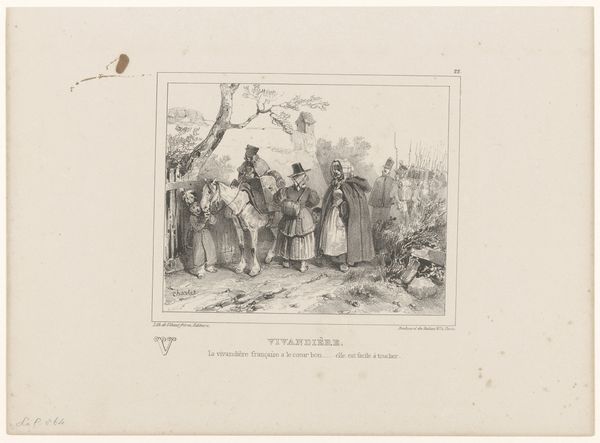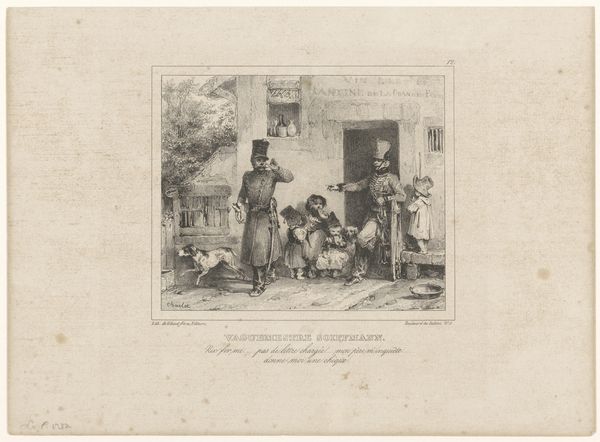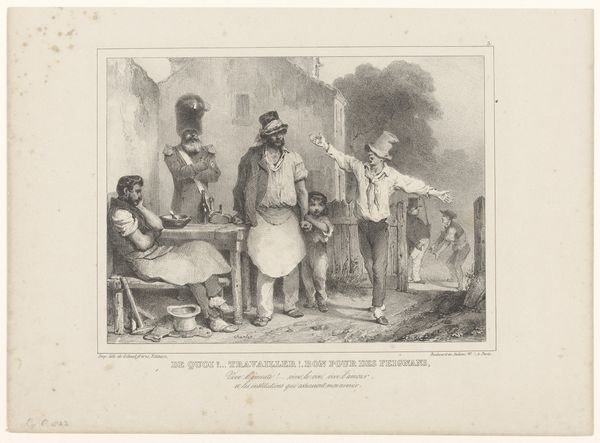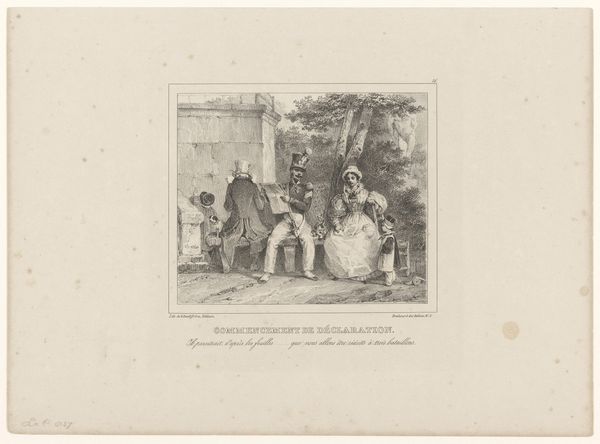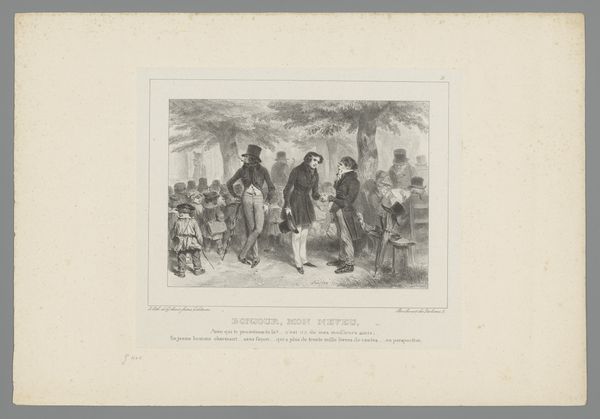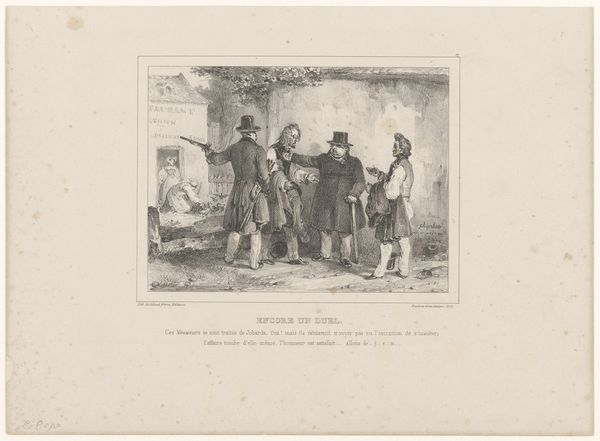
#
pencil drawn
#
photo of handprinted image
#
light pencil work
#
ink paper printed
#
pencil sketch
#
old engraving style
#
personal sketchbook
#
ink drawing experimentation
#
pen-ink sketch
#
pencil work
Dimensions: height 247 mm, width 338 mm
Copyright: Rijks Museum: Open Domain
Curator: Immediately, there’s a striking interplay of light and shadow, giving this seemingly simple scene such depth. The greyscale palette adds a nostalgic layer, doesn't it? Editor: Yes, and looking at "Nieuwjaarsdag," or "New Year's Day," by Nicolas Toussaint Charlet, created in 1835, one can certainly feel the societal dynamics at play. It's currently held in the Rijksmuseum. Curator: It is charming, the balance of the composition holds the viewer's gaze on that central figure, perhaps a busker or itinerant performer. How the light falls emphasizes his position in society! Editor: Exactly. Consider the material constraints Charlet faced. He was working with pen, ink, and paper, and from the looks of it, he used a print-making process. This medium wasn’t just about artistic expression; it was about accessibility. Prints democratized art, making it available to a wider audience than traditional painting ever could. Curator: Notice the texture created through the hatching and cross-hatching; it really breathes life into this monochrome world! The contrasts also highlight the emotions within the image. Look at the faces of the children... anticipation? Editor: It is crucial to understand how printmaking served social functions, from circulating political cartoons to documenting everyday life. New Year's was and still is a commercial and communal experience. Charlet captures a fleeting moment of economic exchange and social interaction. He freezes the dynamics of social hierarchy through this transaction. Curator: True, though I am mostly drawn to how masterfully Charlet’s technique renders depth and form. See how a simple line evokes volume and a range of emotion. Editor: For me, the image serves as a looking glass into a past social framework, revealing insights into labor, class, and the role of art within a community. The act of image production also mirrors its consumption by its contemporaries. It goes to the social context in which images such as these were created. Curator: Well, whether we are focused on technique or social narrative, the artistry holds up for both! Editor: Indeed! It underscores the image's ability to invite dialogue and deepen understanding about ourselves and society.
Comments
No comments
Be the first to comment and join the conversation on the ultimate creative platform.
